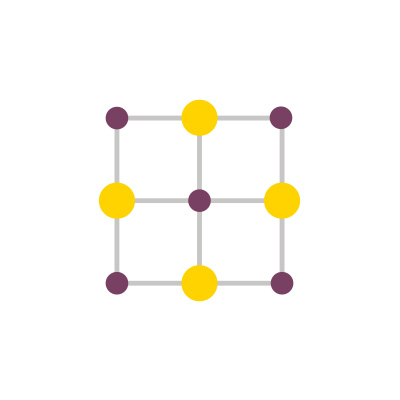Inorganic Chemistry
Inorganic chemistry from abcr


Inorganic chemistry has historically described inanimate nature.
The field includes
- ores,
- minerals,
- salts and
- gasses.
As well as all substances that can be chemically produced from these such as
- acids,
- lyes,
- complexes or
- metals.
In 1828, the chemist Friedrich Wöhler produced the organic substance urea (H2NC(O)NH2) from the inorganic substance ammonium cyanate (NH4OCN). This experiment for the first time demonstrated that the strict separation between inorganic and organic chemistry needed to be reassessed. Complex chemistry is historically also classified as inorganic chemistry. However, the differentiation is ultimately only of historic significance due to organic ligands and the increasing importance of complex chemistry for organic synthesis.
Modern inorganic chemistry deals with all elements of the periodic system as well as with the not precisely defined border areas to other fields.
Inorganic substances can be divided into several groups such as
- metals,
- oxides,
- halides,
- carbides,
- nitrides
and many more.
Oxides
Oxides are oxygen compounds with the oxidation number –II. In addition to water (H2O), oxides also include calcium oxide (CaO), aluminium oxide (Al2O3), silicon oxide (SiO2), carbon monoxide (CO) and carbon dioxide (CO2).
From an ecological perspective, water is not only important as drinking water, but also as a habitat for maritime flora and fauna. Water is by far the most important solvent for chemists. It plays a significant role in a multitude of chemical reactions.
In the construction industry, calcium oxide is “extinguished” with water and used as mortar.
Aluminium oxide exists in many different modifications. One of the important ones is corundum as it is especially hard. It is, therefore, used in the production of sandpaper or as slip-resistant surface material. Moreover, aluminium oxide is also used as a source material for the production of elementary aluminium.
Silicon oxide is the main component of sand and the source material for glass and fibreglass.
Carbon monoxide is an important reductant in technical chemistry and the source material for synthesising organic compounds.
Carbon dioxide is a greenhouse gas that develops during the combustion of fossil fuels. It is isolated from the air and used in the beverage industry as a fire-extinguishing agent or in solid form as a coolant.
Rare earth metal oxides are used in laser technology and in electronics in the area of semiconductors.
Halogen compounds
Halogen compounds contain the elements fluorine, chlorine, bromine or iodine in various oxidation levels. Sodium chloride (NaCl), potassium chloride (KCl), calcium fluoride (CaF2) and sulphur hexafluoride (SF6) are some of the important representatives of this substance class.
Sodium chloride naturally occurs in rock salt, which is cleaned and used as table salt. It is the source material for soda lye, chlorine and hydrogen (chlorine-alkali electrolysis).
Potassium chloride (sylvite) is, e.g., used for the production of potassium, potassium fertiliser and potassium carbonate.
Calcium fluoride is the basic substance for hydrogen fluoride, fluorine and fluorine-containing salts and compounds as, e.g., contained in toothpaste for caries prophylaxis.
Sulphur hexafluoride is, e.g., used in switchgears as insulation gas.
Metals
Most of the 94 naturally occurring elements are metals. All share good electric and thermal conductivity. Metals are also flexible and malleable. A shining surface is also a typical characteristic of metal. Iron, aluminium, copper and lithium are important representatives of metals.
Iron is produced from iron oxide in the blast furnace process. As steel, it can be used for various purposes such as for the production of tools, machines or vehicles.
Aluminium is a light metal with a thickness of only 2.7 g/ccm and is used in vehicle construction and as an alloying component.
Copper is one of the best and cheapest electrical conductors. It is, therefore, used in almost all electrical lines. Copper can be found in coins in elementary and alloyed form. It is also used for covering roofs. Over time, copper turns greed due to oxidation processes.
For some years now, lithium has gained enormous significance as a component of lithium-ion batteries in mobile phones, laptops and vehicles.
The group of precious metal – consisting of gold, silver, palladium, platinum, ruthenium, rhodium, iridium and osmium – is preferably used in catalysis.
Especially palladium and platinum in elementary form – fixed to a carrier material – are used on an industrial scale as catalysts for the hydrogenation of various substrates.
Carbides and nitrides
Many carbides can be used in the abrasives industry and for the production of cutting tools due to their high thermal and mechanical stability.
Nitrides such as silicon nitride (Si3N4) are used for surface hardening. Metalloid nitrides are used as hard materials, high-temperature and fire-proof ceramics materials. Moreover, nitrides can also be used for passivation or as diffusion barriers and semiconductors (AlN, GaN, InN) in microelectronics.

